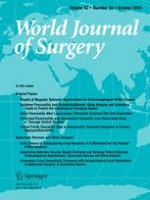Published in:

01-10-2018 | Original Scientific Report
Colonization with Multidrug-Resistant Enterobacteriaceae is Associated with Increased Mortality Following Burn Injury in Sub-Saharan Africa
Authors:
Jared R. Gallaher, Wone Banda, Anne M. Lachiewicz, Robert Krysiak, Bruce A. Cairns, Anthony G. Charles
Published in:
World Journal of Surgery
|
Issue 10/2018
Login to get access
Abstract
Background
Multidrug-resistant (MDR) bacteria are an emerging international concern in low- and middle-income countries that threaten recent public health gains. These challenges are exacerbated in immunocompromised hosts, such as those with burn injury. This study sought to describe the epidemiology and associated clinical outcomes of burn wound colonization in a Malawian tertiary burn center.
Methods
This is a prospective analysis of burn patients presenting to Kamuzu Central Hospital in Lilongwe, Malawi, within 72 h of burn injury. A swab of each patient’s primary wound was collected at admission and each subsequent week. The primary exposure was burn wound colonization with MDR bacteria, particularly Enterobacteriaceae. The primary outcome was in-hospital mortality. A log binomial model estimated the association between the exposure and outcome, adjusted for confounders.
Results
Ninety-nine patients were enrolled with a median age of 4 years (IQR 2–12) and a male preponderance (54%). Median total body surface area burn (TBSA) was 14% (IQR 9–25), and crude in-hospital mortality was 19%. Enterobacteriaceae were the most common MDR bacteria with 36% of patients becoming colonized. Wound colonization with MDR Enterobacteriaceae was associated with increased in-hospital mortality with a risk ratio of 1.86 (95% CI 1.38, 2.50, p < 0.001) adjusted for TBSA, burn type (scald vs. flame), sex, age, length of stay, and methicillin-resistant Staphylococcus aureus colonization.
Conclusion
MDR bacteria, especially Enterobacteriaceae, are common and are associated with worse burn injury outcomes. In resource-poor environments, a greater emphasis on prevention of MDR bacterial colonization, improved isolation precautions, affordable diagnostics, and antibiotic stewardship are imperative.





